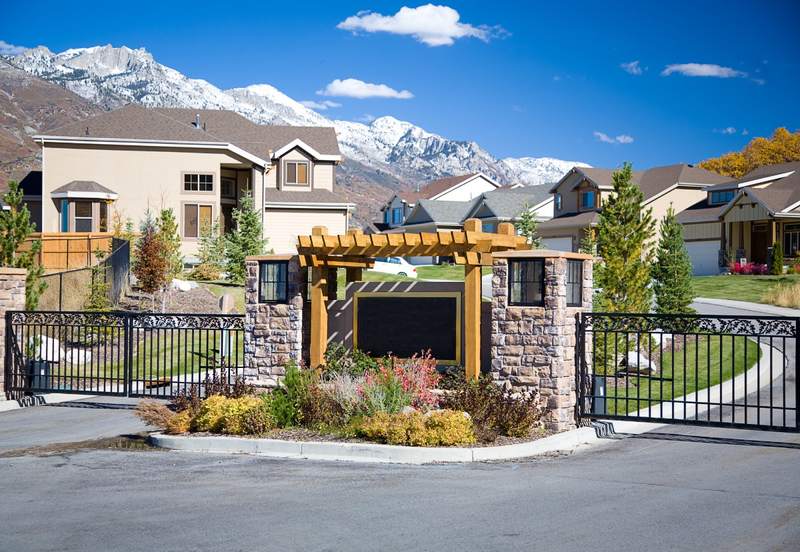
If you’re serious about buying a home, then you’ll need enough saved to make a down payment. The down payment is the amount you pay upfront for the home, and is calculated as a percentage of the total purchase price.
The minimum down payment that’s required depends on the type of loan you choose. Some mortgages have lower down payment requirements than others. For example, conventional loans require a minimum down payment of 3%, but you’ll need to put at least 20% down if you want to avoid paying for private mortgage insurance. A 20% down payment on a $400,000 home would be $80,000, which is no small chunk of change.
But taking the time to put away a larger down payment can help you score a lower mortgage interest rate and save you money in the long run. And setting a goal and sticking to a plan can make saving up for your down payment an attainable goal.
Here’s how to save for a down payment in one year.
How To Save For a Down Payment in 1 Year
| Timeline | Step | Amount Saved | How To Save |
| Getting started | Assess your savings | Estimate: $9,800 to $25,700. | A good place to start is figuring out how much of your existing savings you can put toward your down payment. According to a 2019 consumer finance survey by the Federal Reserve — the most recent data available — the average family has $41,600 saved. Even if you’re fortunate enough to have this much saved up, you won’t want all of it to go toward your down payment. It’s recommended to keep three to six months’ worth of living expenses saved. According to data from the Bureau of Labor Statistics for the same year, the average household spends about $5,300 per month. So, three months’ worth of living expenses would be $15,900, and six months’ worth would be $31,800. Subtract these figures from $41,600, and you’ll have roughly $9,800 to $25,700 in your down payment fund. You’ll also want to have funds saved to put toward other homebuying expenses — like closing costs. |
| Set a total savings goal | Goal: $51,650. This ballpark figure is based on the average sales price of houses sold in the first quarter of 2023 — $516,500, according to the Federal Reserve Bank of St. Louis — and a 10% down payment. | The next step is to determine how much more you’ll need to save. You can work with your real estate agent to create a realistic down payment savings goal. According to the National Association of Realtors, the average down payment for first-time buyers in 2021 was 7% — but such a small down payment will come with higher interest rates. To score a better rate, aim for at least 10%. | |
| Create a budget | Estimate: Varies. For example, if your monthly income is $5,000 and your monthly expenses are $4,400, then you’ll have $600 in savings each month. | A budget can help you project your progress on your savings journey. If you commit to saving as much as possible, your down payment fund can grow consistently. To start, add up your monthly income and subtract your monthly expenses. The remainder is the amount you can choose to save or spend elsewhere. | |
| Open a high-yield savings account | Estimate: $400 to $1,049. If you put your savings of $9,800 to $25,700 into a high-yield savings account with a 4.00% APY, that amount could grow to about $10,200 to $26,749 over a year — not including additional funds that you’ll contribute. | One way to increase the amount you have saved is to let it accrue interest. High-yield savings accounts typically come with an annual percentage yield much higher than that of traditional savings accounts. And unlike retirement accounts, high-yield savings accounts allow you to cash out without penalty. | |
| Automate your savings | Estimate: Varies. You can change the frequency of your deposits and the amount saved each time. | By automating your savings, you don’t have to worry about manually moving money into another account each month. Money can be automatically deposited into your savings on a set schedule, helping you stay on track to your goal. | |
| The first three months | Negotiate a raise | Estimate: $4,600. In 2022, the average salary in the U.S. was $60,575, and the average annual raise was 7.6%. With a raise, you’d go from earning $5,048 per month to earning $5,431 per month before taxes — which means you’ll earn an additional $4,600 over a year. | Getting a raise at your job is easier said than done — but your down payment goal may be the motivation you need to negotiate a raise. Talk to your employer about what you’d need to do to earn a boost in your salary. Use resources like the Bureau of Labor Statistics and the Securities and Exchange Commission to research the current average salary for your job. Also, make sure to be clear, confident, and respectful. Avoid giving an ultimatum, and be patient with the process. |
| Pursue alternative income streams | Estimate: Varies. For example, Uber drivers in California make roughly $20 per hour, according to Indeed. If you decide to drive for five hours each weekend, that’ll earn you $400 per month — which adds up to $4,800 over the course of a year. | Another option to save for a down payment is to explore additional income sources, such as: — A part-time hustle, like rideshare driving or dog walking. — Freelance work. — Housesitting or pet sitting. — Monetizing a hobby. — Online tutoring. — Taking surveys. | |
| Downsize | Estimate: Varies. | If your overhead is too big and prevents you from saving, consider downsizing. This could mean moving from a townhouse to an apartment, or moving in with a loved one. Reducing your rent can free up funds for your down payment. | |
| Cut unnecessary expenses | Estimate: $3,480. This figure is based on the average monthly costs of common discretionary expenses. | Reducing your discretionary spending — even temporarily — can help you save. Here’s how much you could save by eliminating common monthly expenses, based on average costs: — Cable: $217. — Video streaming services: $48. — Gym membership: $15 to $80. You also could save money by cooking at home and limiting how much you eat out. | |
| Six months in | Check on your progress | N/A | After about six months, it’s a good idea to check in with yourself and ask: — Am I saving on schedule? — Is my initial goal still realistic? — Do I need to make any adjustments? — Do I need to change my target date for buying a house? |
| Get your tax refund — and save it | Estimate: $3,200. According to the IRS, the average tax refund in 2022 was almost $3,200. | A fruitful tax refund can be a significant contribution to your down payment savings fund. In 2022, about two-thirds of taxpayers received a refund. | |
| Nine months in | Sell clutter | Estimate: $500. According to The New York Times, the average garage sale nets $500 to $1,000. | Go through your things, and get rid of what you don’t need anymore. You can try making some money by selling your clutter through online marketplaces like Mercari, Craigslist, and OfferUp, or by hosting a garage sale. |
| Ask for cash gifts | Estimate: Varies. If you have generous (and well-off) friends and family, you might be able to get gift money for a down payment. | You can try asking your family and friends for cash gifts to help you reach your down payment goal. However, the money must be a gift and not a loan, and you’ll need to provide your lender with a signed letter that confirms there’s no intention to pay it back. For the 2023 tax year, the IRS caps gifts at $17,000 before triggering a gift tax. | |
| The finish line | Look into down payment assistance programs for first-time buyers | Estimate: Varies. The amount of down payment assistance you can receive will depend on the program and your situation. | Down payment assistance programs are offered by local and state governments, as well as nonprofit organizations, to eligible homebuyers. These programs are typically geared toward low- and moderate-income families who are first-time buyers. You can use this tool to research programs in your area. |
| Get ready to make your down payment | If all goes well and you’ve stuck to this one-year plan, you should have enough to make a down payment on a house. | Once you’ve reached your down payment savings goal, it’s time to tour homes, make an offer, and get a mortgage. If your offer stands out and the seller accepts it, you’ll enter into a purchase and sale agreement and make an earnest money deposit that’s typically 1% to 3% of the home’s price. Earnest money shows the seller that you’re serious about buying, and will be applied to your down payment at closing. | |
| Close on the home | N/A | When you close on a house, you’ll also pay closing costs and finalize all the paperwork. Make sure to ask questions and that you understand everything before signing. After that, the title of the home will be transferred to your name, and you’ll be handed the keys to your new home. |
FAQ
Here are the answers to some frequently asked questions about saving for a down payment.











